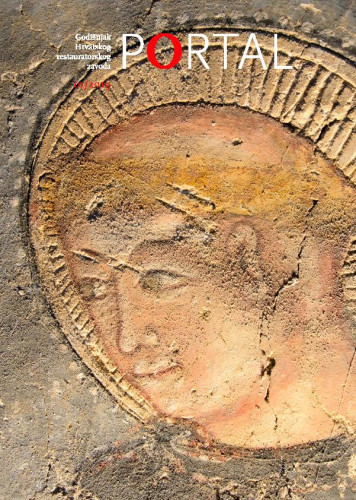Sredinom 15. stoljeća platno kao nosilac postalo je alternativa drvu. Počele su se izrađivati slike na platnu, a slijedio ih je razvoj podokvira. Polovicom 18. stoljeća uvode se podokviri s kajlama, a nedugo zatim i podokviri s kutnim rastezačima. Obje vrste podokvira stvaraju prekomjernu silu u kutovima, što dovodi do raznovrsnih oštećenja slika. Pedesetih godina 20. stoljeća osmišljen je sustav elastičnog napinjanja, čime su odvojene mehanička potpora i napinjanje slike, koje su do tada bile „povjerene“ isključivo podokviru. Godine 1957. taj se sustav primjenjuje u Restauratorskom zavodu u Zadru, a potkraj osamdesetih godina prošloga stoljeća usvaja se u Hrvatskom restauratorskom zavodu i otada se kontinuirano primjenjuje. Takvim načinom do sada je napeto više od dvadeset slika, uglavnom velikih formata. Način izvedbe podokvira i napinjanja prilagođen je svakoj slici, ovisno o njihovu stanju očuvanosti, dimenzijama, obliku i uvjetima smještaja. Dugogodišnjim praćenjem stanja očuvanosti napetih slika, nisu primijećene deformacije podokvira, nosioca i slojeva boje. Napetost slika je zadovoljavajuća pa se može zaključiti da sustav dobro funkcionira, iako se može razvijati i modernizirati primjenom novih materijala te praćenjem i proučavanjem inozemnih iskustava.; In the mid-15th century, oil paintings began to be painted on canvas, so the development of the stretcher followed the use of canvas as a carrier. The first stretching on the stretcher bars is performed together with setting up the canvas through impregnation and preparation, and cannot be corrected. If paintings stretched on a fixed stretcher are exposed to adverse microclimatic conditions, the forces of the material resist each other, which often leads to deformation and damage to the paintings, as well as excessive loss of tension on the stretcher. The situation is often exacerbated by the decay of the wooden frame, often at the same time as the loss of elasticity of the canvas. Throughout history, various stretchers have been created, from the simplest to those with keys. In the late 18th century, expansion-bolt stretchers came to be used in order to resolve the issue of continuous stretching of paintings. Excessive and constant tension in the corners leads to the same effect as in fixed stretchers: that is, stress is concentrated in the corners, leading to various damage to the canvas. Stretchers were considered to perform two functions: mechanical support and provision of tension for the painting. In reality, due to its structure, the stretcher is only able to properly perform mechanical support of the canvas. In the early 1950s, Roberto Carità separated mechanical support and tension of the canvas, which had previously been left to the stretcher. He devised the method of elastic tension for canvases at the Istituto Superiore per la Conservazione ed il Restauro, in Rome, which sparked a real revolution. With this method, and using different elastic springs and regulating their force, we get elastic tensioning that allows equal continuous tension of the canvas in all directions, regardless of the mechanical support exerted by the stretcher.
Sažetak

 Portal : godišnjak Hrvatskog restauratorskog zavoda : 10(2019) / glavna urednica Ksenija Škarić.
Portal : godišnjak Hrvatskog restauratorskog zavoda : 10(2019) / glavna urednica Ksenija Škarić.